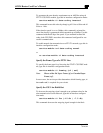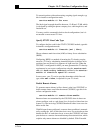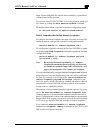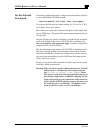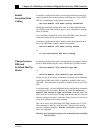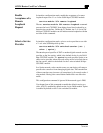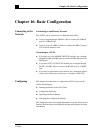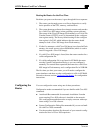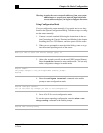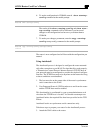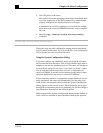
Chapter 15: 56/64-kbps Switched and Digital Data Services (DDS) Interface
August 1997 Page 15-3
2524UM
Enable
Scrambled Data
Coding
In interface configuration mode, prevent application data from repli
cating loopback codes when operating at 64-kbps on a 4-wire CSU/
DSU by scrambling bit codes before transmission:
service-module 56k data-coding scrambled
Enable the scrambled configuration only in 64-kbps digital data ser-
vice (DDS) mode. If the network type is set to switched, the configu-
ration is refused.
If you transmit scrambled bit codes, both CSU/DSUs must have this
command configured for successful communication.
In interface configuration mode, enable normal data transmission fo
the 4-wire 56/64-kbps module, which is the default:
service-module 56k data-coding normal
or
no service-module 56k data-coding
Change between
DDS and
Switched Dial-Up
Modes
In interface configuration mode, transmit packets in switched dial-up
mode or DDS mode using the 4-wire 56/64-kbps CSU/DSU module:
service-module 56k network-type dds
or
service-module 56k network-type switched
Do not use any form of these commands to transmit from a dedicated
leased line in DDS mode. DDS is enabled by default for the 4-wir
CSU/DSU. Switched mode is enabled by default for the 2-wire CSU/
DSU.
In switched mode, you need additional dialer configuration commands
to configure dial-out numbers. Before you enable the
service-
module 56k network-type switched
command, both CSU/
DSUs must use a clock source coming from the line and the clock rate
must be configured to auto or 56k kbps. If the clock rate is not set cor-
rectly, this command will not be accepted.
The 2-wire and 4-wire 56/64-kbps CSU/DSU modules use V.25 bis
dial commands to interface with the router. Therefore, the interfac
must be configured using the
dialer in-band
command. DTR
dial is not supported.
Warning: Any loopbacks in progress are terminated when switching
between modes.




